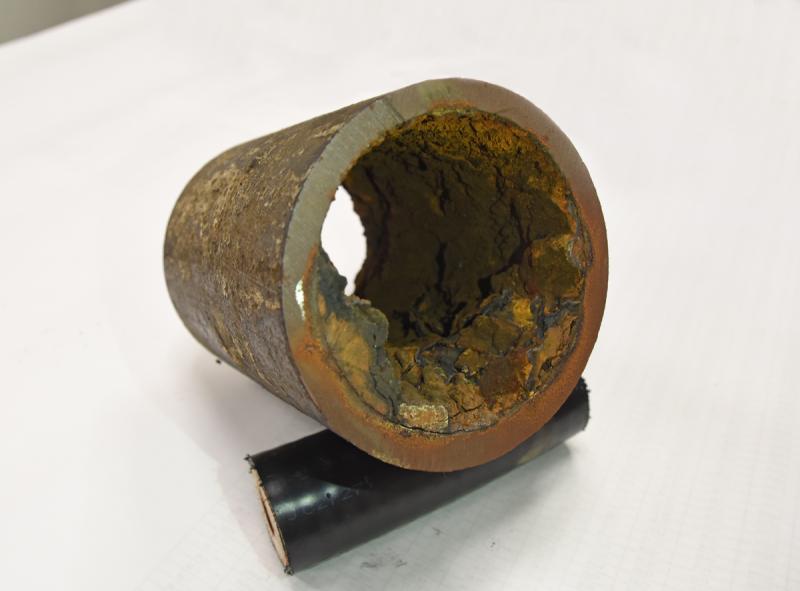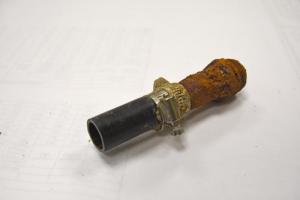If Lewes residents and visitors encounter discolored water in their homes, Board of Public Works General Manager Darrin Gordon wants to know.
The BPW has received a number of complaints in recent months, prompting officials to chart the issues to determine if there is a problem in a specific part of their water system.
Gordon said he suspects recent work on Front Street, Savannah Road and Gills Neck Road knocked rust loose in the decades-old pipes, sending it downstream.
“All it takes is one [project] to loosen it, and it may take a month or two before it breaks loose and a cloud of it goes through,” he said. “What we’ve enjoyed in the past is we’ve left the system alone. We didn’t stir it up. Well, we’re stirring it up now.”
And while it may be an inconvenience and not something the BPW wants to see coming out of customers’ pipes, Gordon said, it is not unsafe.
“Rusty water is a tier 2 contamination,” he said. “In other words, it tastes bad, it looks bad, but it’s still safe.”
The city has several pipes that date to the 1950s and one near Lewes Yacht Club that was laid in 1940.
The BPW has been updating its infrastructure, including major projects to replace water and wastewater mains on Gills Neck Road and Front Street earlier this year. In 2015, the BPW replaced valves and abandoned old 4- and 6-inch water lines the entire length of Savannah Road.
BPW officials have budgeted $1.1 million to replace water mains on Pilottown Road, Third Street and Burton Avenue. In 2012, the water and sewer lines running the length of Bay Avenue were replaced, and, Gordon said, there have been no problems with discolored water since.
BPW employees typically flush the system twice a year – just before the summer rush and again six months later. Because of the work on Front Street, Gordon said, they’ve flushed the system more often this year.
“I believe it’s stirring it up more,” he said. “At this point, we’re trying to find a balance. I want to let it settle and see if it can stay calm for a little bit.”
Gordon said there are indicators to determine where the problem is occurring. If someone turns on their water and it clears up quickly, he said, it’s probably a problem with the homeowner’s plumbing.
The BPW is responsible for the pipes from the water main to the water meter, usually placed on the property line. Everything from the water meter into the home is the responsibility of the homeowner.
He said he’s had a few battles with customers recently where the source of the discolored water turned out to be a galvanized pipe in the service line between the meter and the home.
“We get castigated a little bit for providing this horrible, terrible water, when there’s some ownership that needs to be taken by the owners,” he said.
The BPW will take a new approach moving forward. When a complaint is received, BPW employees will go out to the home and open a spigot. They will also take a sample from the water meter. They will then check the water for discoloration at the homes on either side of the original home. The test will also include a measuring of chlorine levels and water pressure.
The investigation will help determine from where the discolored water is coming.
“Yes, we do get dirty water,” Gordon said. “I truly believe it is something that happens irregularly.”
Nick Roth is the news editor. He has been with the Cape Gazette since 2012, previously covering town beats in Milton and Lewes. In addition to serving on the editorial board and handling page layout, Nick is responsible for the weekly Delaware History in Photographs feature and enjoys writing stories about the Cape Region’s history. Prior to the Cape Gazette, Nick worked for the Delmarva Media Group, including the Delaware Wave, Delaware Coast Press and Salisbury Daily Times. He also contributed to The News Journal. Originally from Boyertown, Pa., Nick attended Shippensburg University in central Pennsylvania, graduating in 2007 with a bachelor’s degree in journalism. He’s won several MDDC awards during his career for both writing and photography. In his free time, he enjoys golfing, going to the beach with his family and cheering for Philadelphia sports teams.

























































